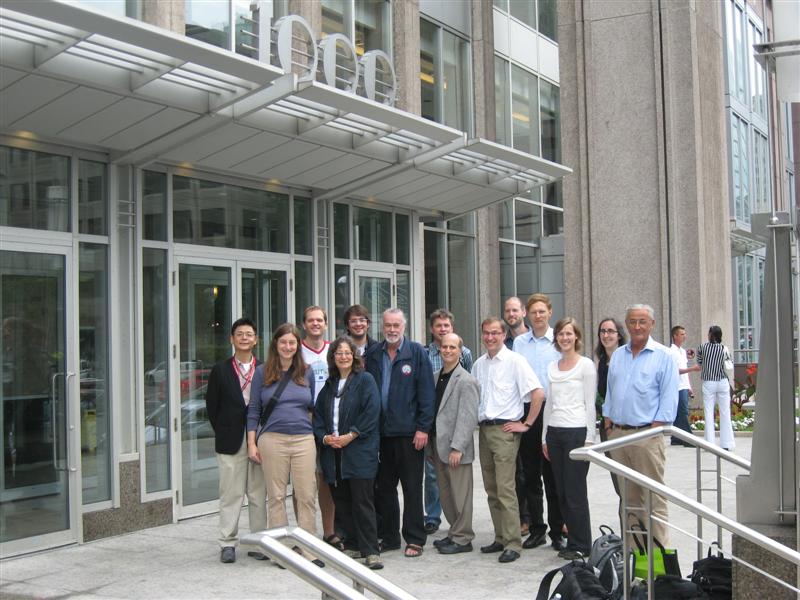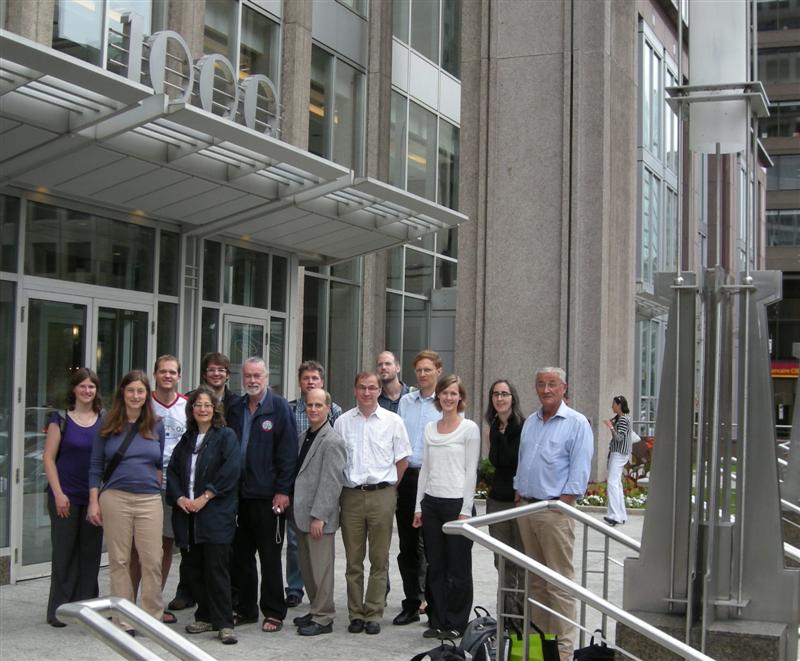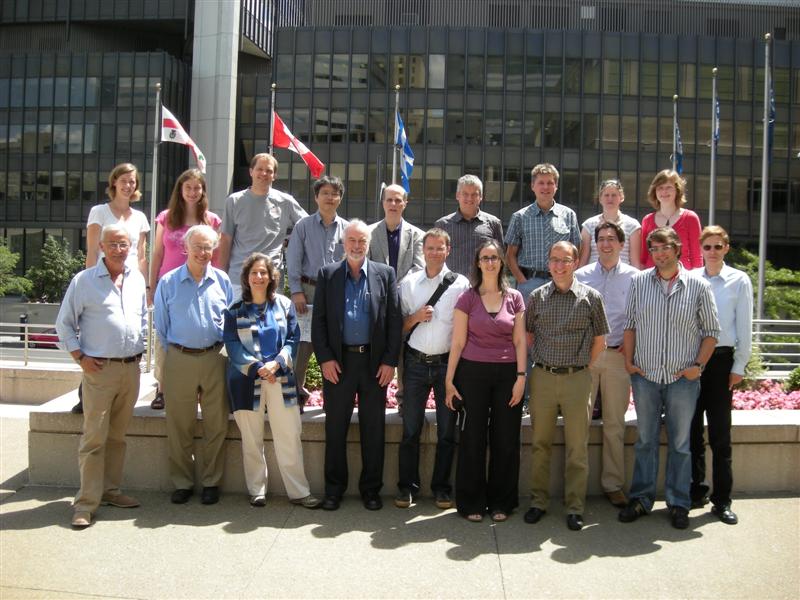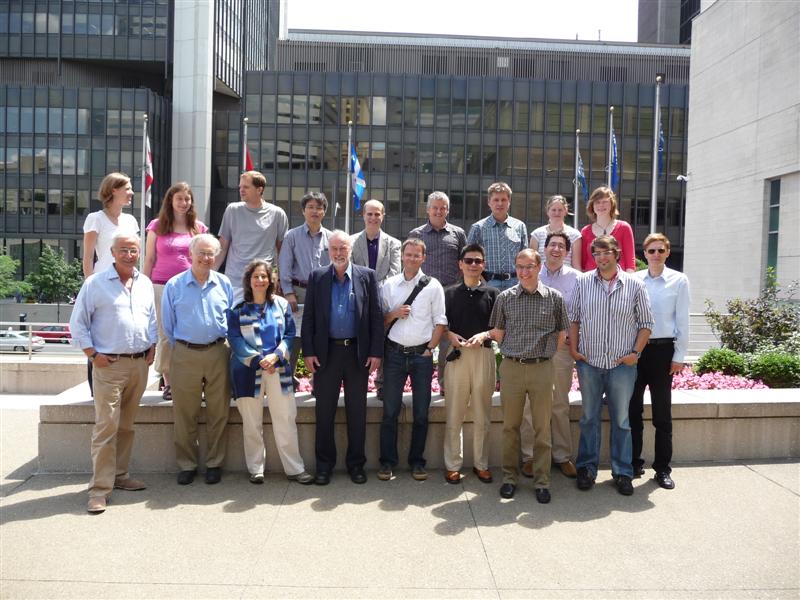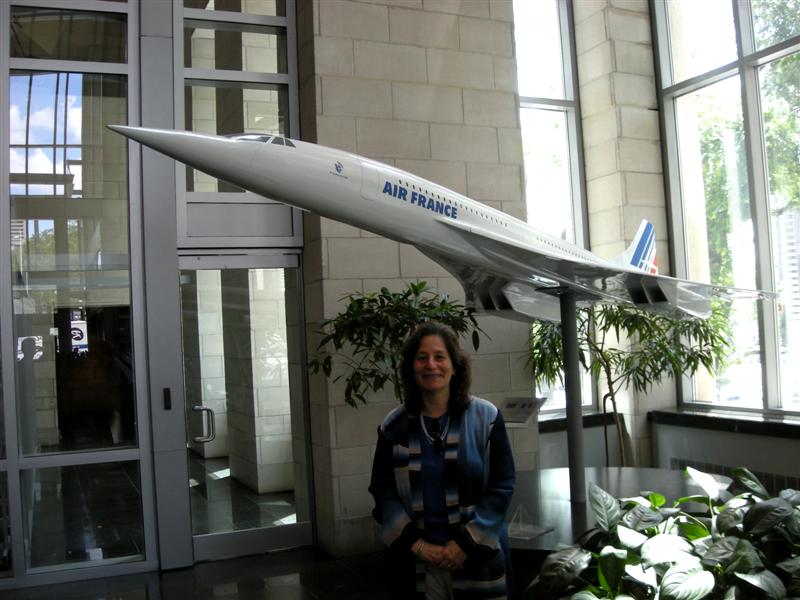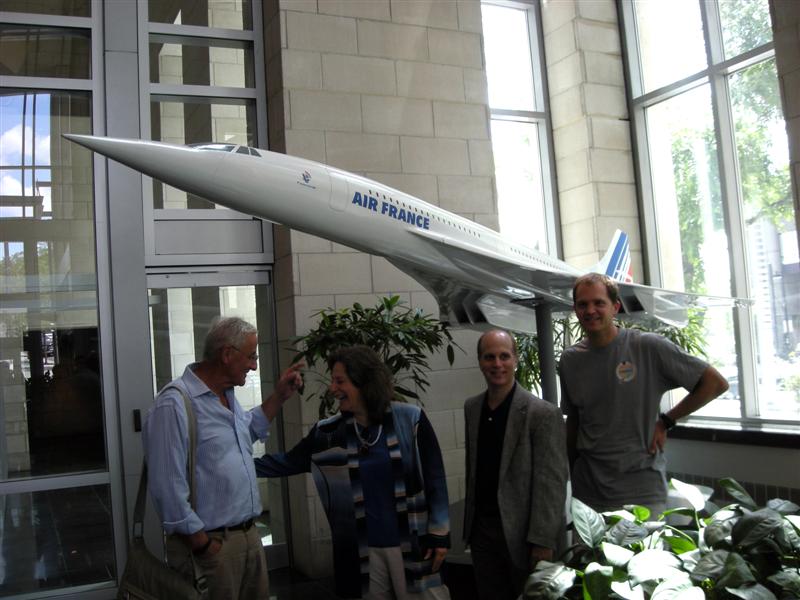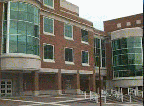
| Home |
| Research |
| Group Members |
| Publications |
| Classes Taught |
| Prospective Students |
| Directions to CSS Bldg |
| Campus Map |
MOCA 2009
A group of atmospheric scientists attending the MOCA 2009 meeting in Montréal, Canada set out on a determined goal: to find the building where the Montréal Protocol had been signed.
We were successful on our second attempt! The protocol was signed at 1000 West Sherbrooke St. (1000 Rue Sherbrooke Ouest) in a building now known as the Mont-Royal Center. During Sept 1987 this building was home to the International Civil Aviation Organization (ICAO), a specialized agency of the United Nations. Oddly there is no plaque or other type of commemoration to the signing of the protocol on public outdoor display at this historic site.
Photo credit: Rebecca Batchelor
Photo credit: Shigeo Yoden
After a 20 minute walk, it was wonderful to hear Tom McElroy (sixth person from the left) proclaim "this was the building where the signing occurred". Tom was present for the signing of the Montréal Protocol on 16 Sept 1987! Click here for photographic evidence of Tom's presence at the signing.
___________________________________________________________________________________________
Initially we had headed to the present day headquarters of ICAO, located close to Palais des congrès, the site of the MOCA meeting. With its array of flags and scaled version of the SST Concorde aircraft, the present day ICAO headquarters provided a number of nice photo opportunities:
Photo credit: Shigeo Yoden
Photo credit: Farahnaz Khosrawi
Alas, the present day headquarters of ICAO is not where history occurred. Several meetings commemorating the signing of the protocol have been held at present day headquarters. As we posed for the photos shown above, Tom McElroy noted "this was not the building where the protocol was signed". Tom's statement set off a determined effort to ascertain the actual location of the building where the protocol was signed. The key element enabling us to locate the building was a PDF file Tom was able to find that provides a history of ICAO. Click here to see a wonderful picture of Tom and colleagues taken at the actual signing!
Photo credit: Shigeo Yoden
Being a determined group, we went inside the present ICAO headquarters building to inquire about where the protocol had been signed, to see if there was any type of commemoration, etc. We were greeted by a wonderful model of the Air France supersonic transport Concorde airplane. Susan Solomon (pictured above) was particularly delighted at the sight of this aircraft because Harold Johnston, her PhD thesis advisor, had written a paper in 1971 showing that the release of nitrogen oxides in the exhaust of this class of aircraft could, under certain conditions, lead to considerable reductions of Earth's protective ozone layer. This finding led the U.S. government to establish the Climate Impact Assessment Program (CIAP), the first research program to support coordinated research in atmospheric composition. CIAP produced many of the pedestals that support present-day atmospheric chemistry. The comprehensive research monographs issued by CIAP were the precursor of the WMO/UNEP Scientific Assessment of Ozone Depletion reports and served as a model for the reports issued by the Intergovernmental Panel on Climate Change (IPCC).
___________________________________________________________________________________________
At the time the Montréal Protocol was signed, Susan Solomon was leading the National Ozone Expedition in Antarctica that provided the first observational evidence that industrial chlorofluorocarbons (CFCs) cause the Antarctic ozone hole. The Montréal Protocol was put in place based on scientific evidence that CFCs and other industrial halocarbons were leading to an erosion of the global ozone layer. As evidence emerged linking anthropogenic halocarbons to polar ozone depletion, a series of amendments considerably strengthened the original provisions of the protocol.
The Montréal Protocol and its amendments have been extraordinarily successful in limiting the abundance of ozone depleting substances. It is generally not appreciated that this legislation has also had a profoundly important benefit for limiting global climate change because, in the absence of regulation, the greenhouse gas warming due to ozone depleting substances would today nearly equal that of carbon dioxide. The regulation of ozone depleting substances initiated by the Montréal Protocol has led to initial signs of recovery of the Antarctic ozone hole as well as the mid-latitude ozone layer. A thorough history of the Montréal Protocol can be found by following the links given at the Center for International Earth Science Information Network webpage.
Department of Atmospheric and Oceanic Science College of Computer, Mathematical, and Natural Sciences
Department of Chemistry and Biochemistry The University of Maryland Newsdesk
Earth System Science Interdisciplinary Center The University of Maryland
